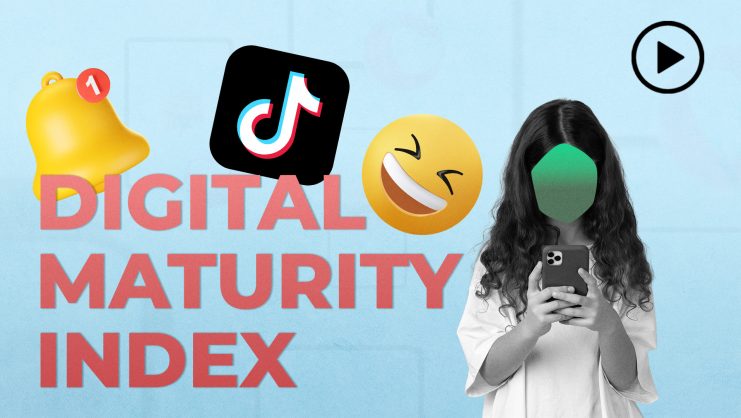Customer experience – a customer’s perceptions after interacting rationally, physically, emotionally, or psychologically with a company – is a feeling that impacts the customer’s future behavior, generating memories that drive loyalty. Today, optimal management of this feeling is a key factor for a company to differentiate itself and be competitive.
Customer experience management, or CEM, should play a decisive role in a company’s strategic decision-making; it must be given similar weight to that granted to departments such as human resources, systems or finance. It is important to manage both the internal and external customer experience with fast, open, cutting-edge dialogue. Regardless of the challenges, every large company must work on two aspects: a new fluid dimension of the experience that permeates the entire organization and the configuration of tools and work models.
No company can afford to neglect the customer’s voice when making important decisions, whether to define a product or service, approach a market, or modify its value proposition.
Horizon of Opportunities
Today, the different customer-company relationship models make it necessary to include the customer’s vision in corporate DNA. No company can afford to neglect the customer’s voice when making important decisions, whether to define a product or service, approach a market, or modify its value proposition. Customer experience provides the knowledge that lends consistency to all consumer-related initiatives and functions. Actively listening to this voice in real time is what ensures that no action runs contrary to the brand promise or value proposition the company seeks to deliver.
As a result of the growing “commodification” of markets, today’s companies must design more highly differentiated attributes. They have to offer something different from their competitors, new entrants, and digital players in order to add value to their offer, increase its potential, and convince customers to stick with it longer. In this regard, it should be recalled that value attributes linked to lifestyle, and therefore more reflective of what the customer is, lives, or thinks, matter twice as much in price perceptions as attributes traditionally associated with the product (design, innovation, etc.), the service itself, or the brand. Whether or not something is considered cheap or expensive depends on how well it matches the customer’s lifestyle, needs, or feature requirements.
New digital entrants and consolidated players have made CEM more pressing. If we do not build a distinct value proposition and if we fail to deliver the promise of a different brand experience, other companies will enter our industry and do what we do using proven methods. Multinationals such as Google, Facebook, and Apple are present in sectors such as transport, tourism, and telecommunications even though they have no expertise in these industries and their only plus is their extensive work on all aspects of the customer experience: looking to set new standards, breaking the rules of the game, and creating a new vocabulary for conversations with consumers. For these companies, it is relatively easy to broaden that experience and introduce more and more products, services, and markets.
Value attributes linked to lifestyle, and therefore more reflective of what the customer is, lives, or thinks, matter twice as much in price perceptions as attributes traditionally associated with the product, the service itself, or the brand.
Differential Elements
Traditional companies run the risk of being squeezed out of their industries, even if they were founded in them. In this context, CEM allows them to identify the differential elements of their value proposition so that, whatever might happen with their business, the company can protect its position.
This opens up a new paradigm of customer communication and collaboration. It is a demand for a different, dynamic, two-way conversation, both to define strategy and new products and to meticulously customize the offer and generate an emotion or feeling in the consumer. This scenario calls for new tools and different ways of doing things, which is another opportunity for CEM, as it offers a range of tools and talents to meet such needs.
Three Scenarios
Companies face three CEM models or scenarios, which are not better or worse, but rather a consequence of their evolution and of how the CEM function has progressed. The first is that of companies that invest and have teams, but are committed to maintaining continuity by monitoring and controlling established indicators and cleaving to an agenda with no new content. The second is that used by organizations immersed in a “decaffeinated” scenario, in which CEM is increasingly displaced from business strategy and refocused on aspects such as customer service and satisfaction. Here, the status of CEM within the organization is more compromised, perhaps because the medium-term agenda is unclear, the results have been lackluster, or the launch was hasty and failed to take short-term considerations into account. The third model is the strategic fit, in which the organization grasps that CEM is the future and turns it into a horizontal function, tasked with playing an advisory role or serving as a source of knowledge for the rest of the organization for the launch of new services, products, or channels.
In moments of change like the current one, reformulating the customer experience in a company involves more opportunities than risks. There is no need to explain to the CEO of a big company why it is necessary to continue investing in CEM. The possible internal drawbacks that the function may not be understood or may not evolve are quickly offset by the benefits it offers. It is a function with a history of success and an even more promising future.
© IE Insights.











